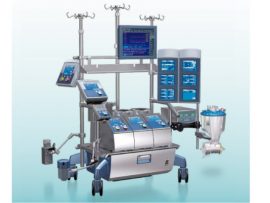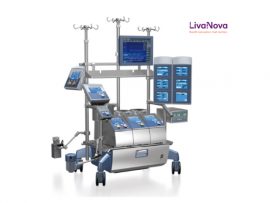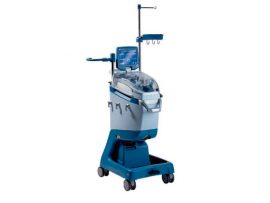Abstract Background Reducing blood product utilization after cardiac surgery has become a focus of as studies have suggested improved outcomes. The relative impact of preoperative anemia versus packed red blood cells..
Read MoreAbstract Introduction: Increasing the hematocrit is considered to increase oxygen delivery to the patient, especially when hypoxic conditions exist and the patient may become more stable. The aim of this..
Read MoreAbstract BACKGROUND: Blood transfusion is used to treat acute anemia with the goal of increasing blood oxygen-carrying capacity as determined by hematocrit (Hct) and oxygen delivery (DO2). However, increasing Hct..
Read MoreAbstract Extracorporeal CO2 removal (ECCO2R) can permit lung protective or noninvasive ventilation strategies in patients with chronic obstructive pulmonary disease (COPD) and acute respiratory distress syndrome (ARDS). With evidence supporting ECCO2R..
Read MoreAbstract We demonstrated pulmonary arteriolar blood flow-mediated CO2 gas excretion in rabbit lungs. The shear stress stimulation produced CO2 gas in cultured human endothelial cells of pulmonary arterioles via the activation of..
Read MoreAbstract Objective The objective was to determine the optimal cell saver device settings (infusion rate and wash rate) at which hematocrit is preserved and potassium and lactate are removed from..
Read MoreAbstract Decrease of patient’s hematocrit level is a natural process which occurs during the initiation of cardiopulmonary bypass. To some extent it is a beneficial occurrence, but excessive hematocrit decrease..
Read MoreAbstract Objectives: We previously reported that postoperative hemodynamics and developmental outcomes were better among infants randomized to a higher hematocrit value during hypothermic cardiopulmonary bypass. However, worse outcomes were concentrated in..
Read MoreAbstract Two equations have been developed from multi-frequency measurements of blood impedance Zb for a simultaneous electrical online estimation of changes in blood hematocrit ΔH [%] and temperatures ΔT [K] in cardiopulmonary bypass (CPB). Zb of fixed blood..
Read MoreAbstract Background: The incidence of new acute neurological injury occurring in neonates and infants during cardiac surgery utilizing cardiopulmonary bypass is reportedly 3% to 5%. In 2013, we adopted a high..
Read MoreAbstract Cardiopulmonary bypass is an integral and indispensable part of surgical repair of congenital heart defects. While the complications and morbidity secondary to the use of cardiopulmonary bypass has decreased..
Read MoreAbstract Background: This study investigated the clinical outcomes at the minimum and maximum levels of hematocrit (HCT) during cardiopulmonary bypass (CPB) in low-risk patients undergoing coronary artery bypass graft (CABG)..
Read MoreAbstract Background This study examined the association between cardiopulmonary bypass (CPB) hematocrit and postoperative acute renal failure (ARF) in patients undergoing aortic arch surgery with hypothermic circulatory arrest. Methods The..
Read MoreAbstract Background: The use of cell salvage reduces homologous blood transfusions during operations and avoids associated complications. Therefore, autotransfusion is an integral part of Patient Blood Management (PBM). The..
Read More









